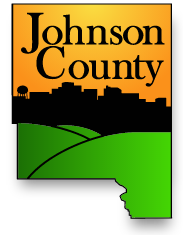- What is roadside wildlife habitat?
-
The strip of vegetation between the edge of the road and adjacent farm or that you view while driving down the road is roadside habitat. It's home to many species of wildlife. Pheasants and quail, rabbits and grassland song birds use roadsides for nesting, feeding, roosting, and as hiding cover. Roadsides are also important travel corridors that provide wildlife safe access to other adjacent habitats. Johnson County roadsides represent a potential habitat resource of thousands of acres in our rural areas.
In addition to habitat, roadside vegetation provides other benefits. It reduces erosion and siltation in streams, reservoirs and wetlands. Healthy stands of native vegetation resist invasion by noxious weeds reducing herbicide use and maintenance costs. Native grasses, wildflowers and shrubs, important components of quality habitat, also add color and beauty to the rural landscape.
- Where do I purchase native grass and wildflower seed?
-
There are many reputable native grass and wildflower dealers. The Johnson County IRVM encourages the use of “yellow tag, source identified, and Iowa ecotype” seed in your plantings. For additional information on dealers, please visit the Iowa Prairie Network’s Seed Dealer Guide for up to date listings of seeding contractors. The list of dealers does not imply endorsement or preference by Johnson County IRVM.
- Can I plant natives in my roadside? What are the policies/procedures?
-
Johnson County IRVM plants roadsides into native vegetation where it is feasible, both from a safety and functional standpoint, but also from an economic standpoint. Johnson County does allow landowners to plant native vegetation into the right of way. The vegetation chosen cannot be so tall as to cause visibility problems, snow drifting problems, etc. The IRVM Program can help you choose the correct plant species for your location. Please keep in mind that the right of way has many users, such as the County Secondary Road Department, utilities, snowmobilers, etc. and that the area may be occasionally disturbed. Johnson County IRVM shoulder mows all over the county road system and native plantings are included in that mowing as well as occasional ditch bottom and backslope mowing.
Plantings must comply with the County’s Noxious Weed Policy and Brush Control Policy. To start a roadside planting, one of the first steps is to fill out a Permit to Work Within the Right of Way. Also, before you purchase seed, start work, etc. it is a good idea to contact the County Roadside Vegetation Manager to be sure your plant selection and location are suitable and you have the proper permits.
- Can I put up Do not mow signs?
-
Johnson County shoulder mows all over the county road system to improve roadside visibility and safety. Johnson County will allow DO NOT MOW signs to be place around herbaceous vegetation a landowner does not want shoulder mowed, as long as the vegetation does not cause any road issues such as a visibility problem, etc. Please keep in mind that the area will still be shoulder (6-7 feet) so you should place your plant material away from the road shoulder. If, at the discretion of Johnson County, the vegetation is causing a problem, normal maintenance techniques will be used and the signs removed. Woody vegetation such as trees and shrubs are not allowed and must follow the Brush Control Policy guidelines. Johnson County does not provide signs to landowners. Landowners who choose to place their own signs should be sure to make the signs clearly visible to roadside equipment operators.
- What can I plant into the Right of Way?
-
When considering what plant material to utilize in a roadside planting, safety and visibility must be thought of. Be sure to select plant species that will not cause road issues such as poor visibility, snow drifting and icing, or obscure road signs. Also, please be aware that trees and woody plants must meet the criteria of the Brush Control Policy. Also remember that the area may be occasionally shoulder mowed as part of the County's normal maintenance. Included here are some general guidelines for plant material selection.
Guidelines for Plant Material Selection:
- Find out what’s already growing on your site first
- Visit nearby remnants and nearby good reconstructions if possible to see what they are like
- Find out what species are native to your area, talk with local prairie experts
- Decide on goals and needs of your planting- is this a butterfly garden or more for wildlife habitat and erosion control?
- If you buy seed, discuss site selection and your goals for the planting with seed dealers
- Select species that will not cause a visibility or snow drifting issue once mature
- How will you maintain the area once planted? Mowing/Burning/Chemicals?
- Who do I call if I have a road visibility/other concern?
-
If there is a visibility concern (i.e. Poor visibility, blocked road sign, etc., please contact the County Roadside Manager at 319-356-6046. If it is an emergency, please contact the Sheriff’s Office. For other road related issues, please contact the Secondary Roads Department at 319-356-6046.
- What do I do if I have noxious weeds in the roadside?
-
Johnson County manages nearly 6000 acres of roadside spread over 2000 miles of road. The IRVM Program manages noxious and invasive species in the roadside with several management tools. If an infestation of a state or county listed noxious weed is present in the County roadside, the County Weed Commissioner should be contacted. You can contact the County Weed Commissioner at [email protected]. For more information about identification and management of noxious and invasive weed species, click on the links below:
- Noxious & Invasive Weeds Species of Johnson County ***FINISH ***
- Hawkeye Cooperative Weed Management Area
- Iowa Living Roadway - Common Roadside Invasive Plants in Iowa
